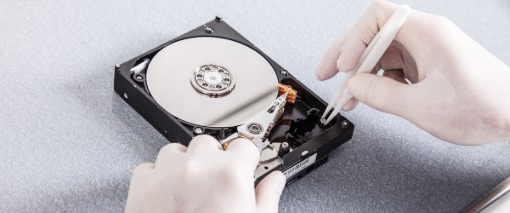How do I recover data from an SSD drive?
Since their technology is based on flash memory, retrieving data from an SSD can be a challenge. Data distribution algorithms, designed to improve SSD performance and read/write speeds, complicate the task…
Faulty SSD: what to do?
Because of their design, SSDs are less sensitive to shock, vibration and temperature variations. So, unlike HDDs, they are not subject to mechanical and hardware failures.
Step 1: Back up your data regularly
Regular backup of the data on your SSD (as on all your other storage media) is the first thing you should do to anticipate any failure. Since Flash NAND technology only allows a limited number of write cycles, SSD life expectancy is limited.
Point 2: To deactivate the TRIM function or not?
The TRIM function used on SSD disks indicates which data blocks are unused and deletes them to optimize write performance. This makes it impossible to recover data deleted from the SSD. Disabling the TRIM function therefore anticipates data loss, enabling it to be recovered at a later date, but reduces the performance (and therefore the value) of the SSD.
Point 3: Detecting and diagnosing a fault
SSDs are not subject to mechanical or hardware failure. And since they have no moving parts (read/write head, storage platters, etc.), there are no warning signs (humming disk, access errors, etc.) to predict a failure or :
- Controller failure or malfunction.
- Corrupt or faulty data blocks.
- Firmware corruption or errors.
- Human error (data deletion, etc.).
- Electrical damage.
- Etc.
How do I recover data from an SSD?
- Discontinue use of the SSD after any failure or malfunction.
- Do not tamper with SSD components (disassembly, desoldering, etc.).
- Check whether the TRIM function is enabled in the operating system.
- In all cases, it is advisable to contact a data recovery laboratory.










